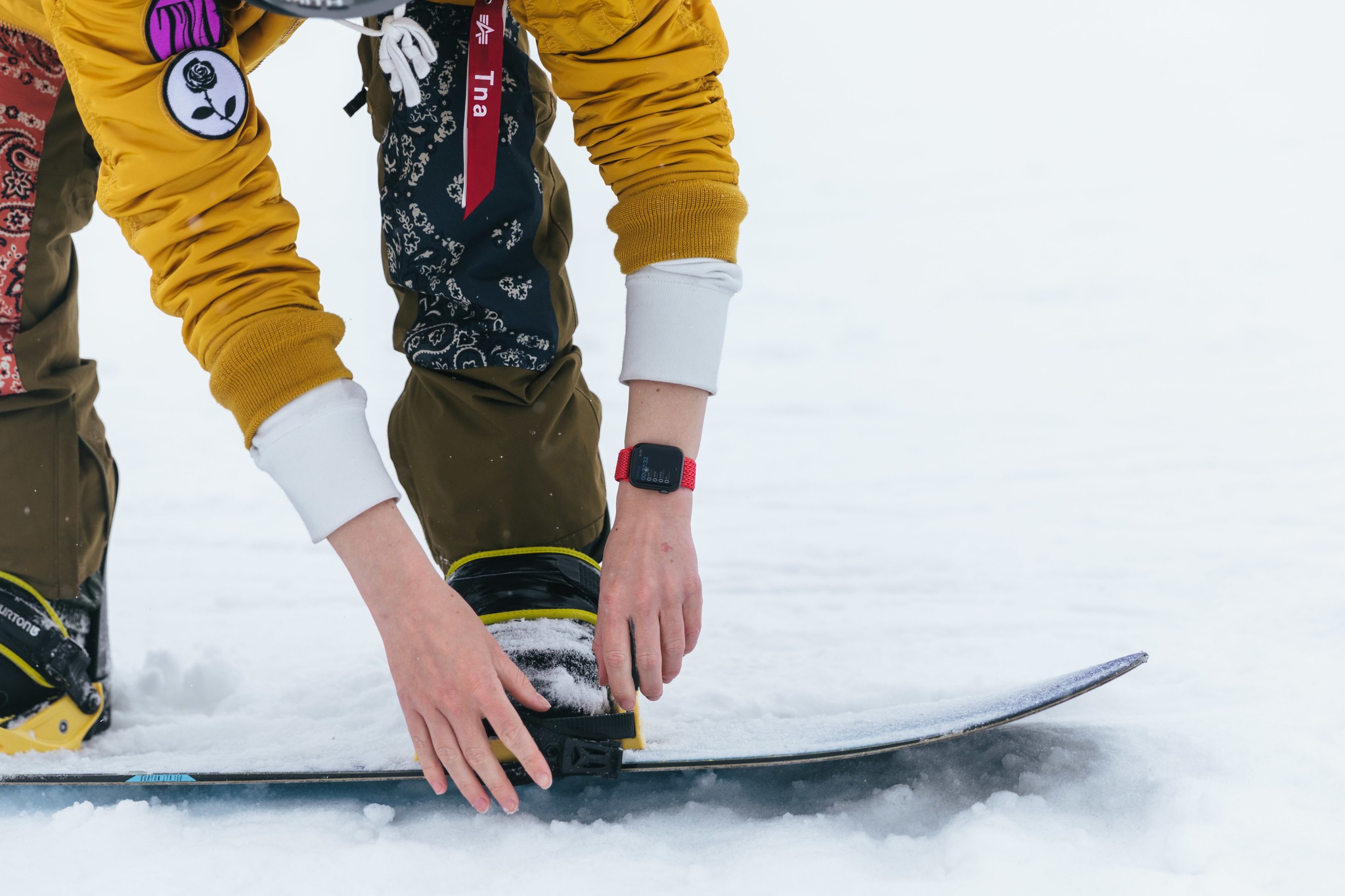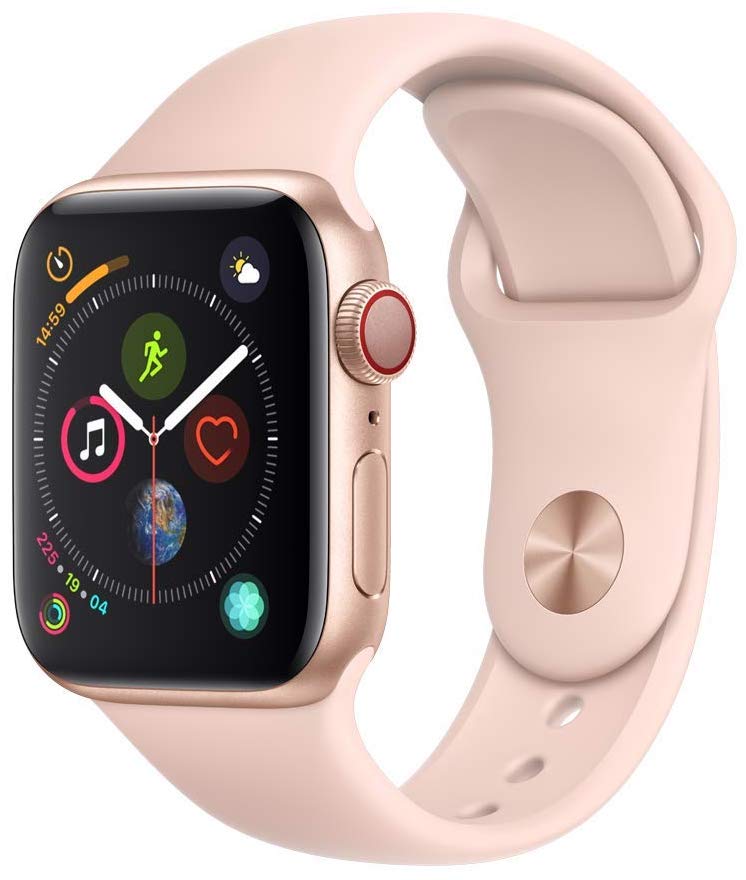I've been wearing an Apple Watch since the product launched in 2015 and a Series 4 since that version launched in September of 2018. That's almost as long as I wore my old calculator watch in High School. Far, far longer than I imagined ever wearing a watch as an adult. I was never into wrist wear as jewelry and my phone quickly became my timepiece, so, yeah, I was one of those.

But, even when Apple Watch was still just a whisper, it intrigued me. Because I instantly I knew just exactly what its killer feature would be for me — convenience. Just like my iPhone meant I no longer had to go racing back to my Mac to get an important subset of things done, my Apple Watch meant I didn't have to even reach for my phone for, sure, a smaller subset, but a brief, frequent, and important one.
Rather watch than read? Hit play on the video above!
That's basically why my mom wanted an Apple Watch the moment she saw it as well. She was moving to the Plus-sized iPhone and was worried that, keeping it in her purse, on the counter, or plugged in, she'd miss messages and calls from her family and friends. The Watch solved that perfectly. Same for other family members and friends who wanted to be able to leave their phones behind but stay informed and stay connected.
Later, as Apple began focusing more on health and fitness and safety, expanding the heart rate monitor, adding emergency services and fall detection, my thinking evolved along with it — the new, far more important killer feature was literally saving lives.
We upgraded my mom to a series 4 immediately and several of my friends got them for themselves and their parents as well for just that reason.
Now, though, having worn an Apple Watch for almost 4 years, and this latest one for over 6 months, I'm starting to think less narrow… or maybe just less extreme.
iMore offers spot-on advice and guidance from our team of experts, with decades of Apple device experience to lean on. Learn more with iMore!
Sure, Apple Watch makes many of the brief, frequent, and important things you do every day more convenient, and yes, from detecting issues with your heart rate to calling 911 when you can't get to a phone, it could help save your life when and if you need it most.
But even when you don't need it to check a message, control a light, tap a payment, track a workout, or, yeah, save your life, it's still with you, keeping you informed. Keeping you connected. Keeping you mindful. Keeping you moving. And, yeah, keeping you safe.
It's become, at least for me, an ultra-personal ambient always attached computing presence. In other words, it's become an inextricable part of my life. Not in the super thirsty smartphone way, but in the kinda super chill Apple Watch way.
For people who want:
- Bigger screen
- Faster performance
- Built-in EKG (ECG)
- Fall detection
- Longer battery life for workouts
Not for people who want:
- Android compatibility
- Always-on time
- Custom watch faces
- Week-long battery life

Previously, on Apple Watch Series 4…
- Apple Watch Series 4 (Hèrmes) Review
- Apple Watch Series 4 (Nike+) Review
- Apple Watch Series 4 (Gold Steel) Review
- Apple Watch Series 4 (Aluminum) Review
Apple Watch Series 4 Spring 2019 Updates
Ok. Here's the thing. I'm a little late. It's closer to 7 months now than 6, but after reviewing the aluminum at launch, checking out the gold steel and Nike+ a couple of weeks in, and following up with the Hermès some 2 months after, I got delayed slightly by some new iPads, AirPods, and, yeah, services.
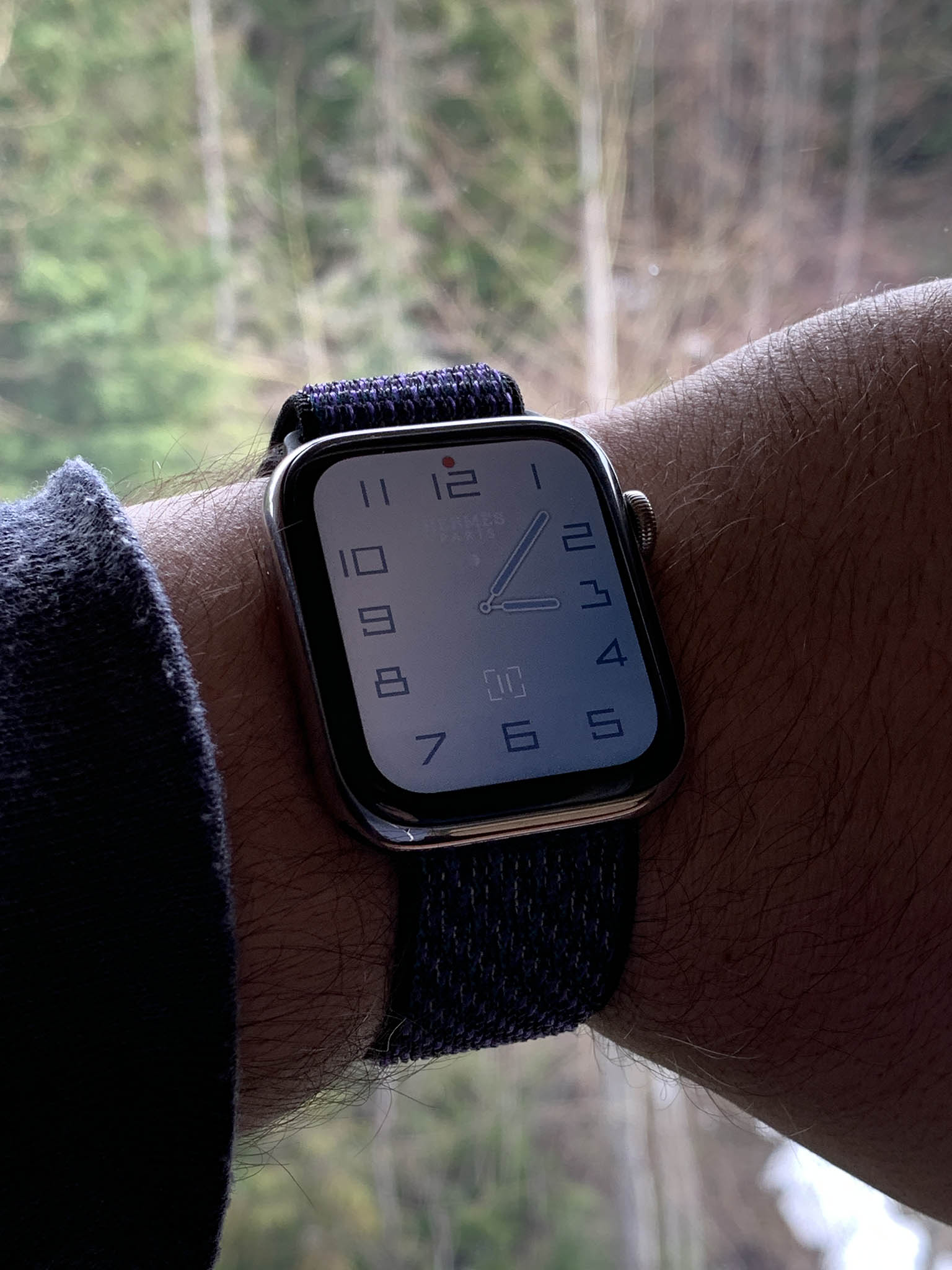
But, I've been able to use the extra time to collect extra information, and from people beyond my own personal use cases and, frankly, the typical tech-sphere considerations.
I've also got to use the latest watchOS update, which adds ECG to Hong Kong and 19 countries across Europe, including France, Germany, Italy, Spain and the United Kingdom. Also, and more applicable to me, some new watch face variations for Nike and Hermes, and AirPods 2 support, which makes a great pairing even better. Like, I don't know dark chocolate and crunchy peanut butter?
There are also new watch bands for the spring. This year's collection includes new sport loops, new sport bands, new Hermès straps, new almost everything.
For the sports bands, there's new Spearmint green, Delft blue, and Papaya orange. For Nike, Hyper Grape, Spruce Fog, and Teal Tint. For the sport loops, Papaya orange, Cerulean blue, Spearmint green, and Lilac purple. For Nike loop, Spruce Fog, Teal Tint, Hyper Grape, and Summit white.
For the modern buckle and leather loop, Cornflower blue, sunset orange, and also Lilac for the buckle. And for Hermes, single and double tours in Rose Sakura/Craie/Argile Swift, Bleu Lin/Craie/Bleu du Nord, and Etoupe.
I like the papaya but I love the hyper grape. So, if you already have an Apple Watch and aren't interested in upgrading, you can still give yourself a freshly upgraded look for the spring.
Apple Watch Series 4 Time Keeping
Not much has changed for me over the last few months when it comes to using the Apple Watch as a Watch. I'm still all-in on Infograph Modular as my getting things done face. It's almost all of the data I need throughout the day, available at a glance whenever I raise my wrist. I know other people prefer Infographic analog, I just find it faster to visually parse digital.
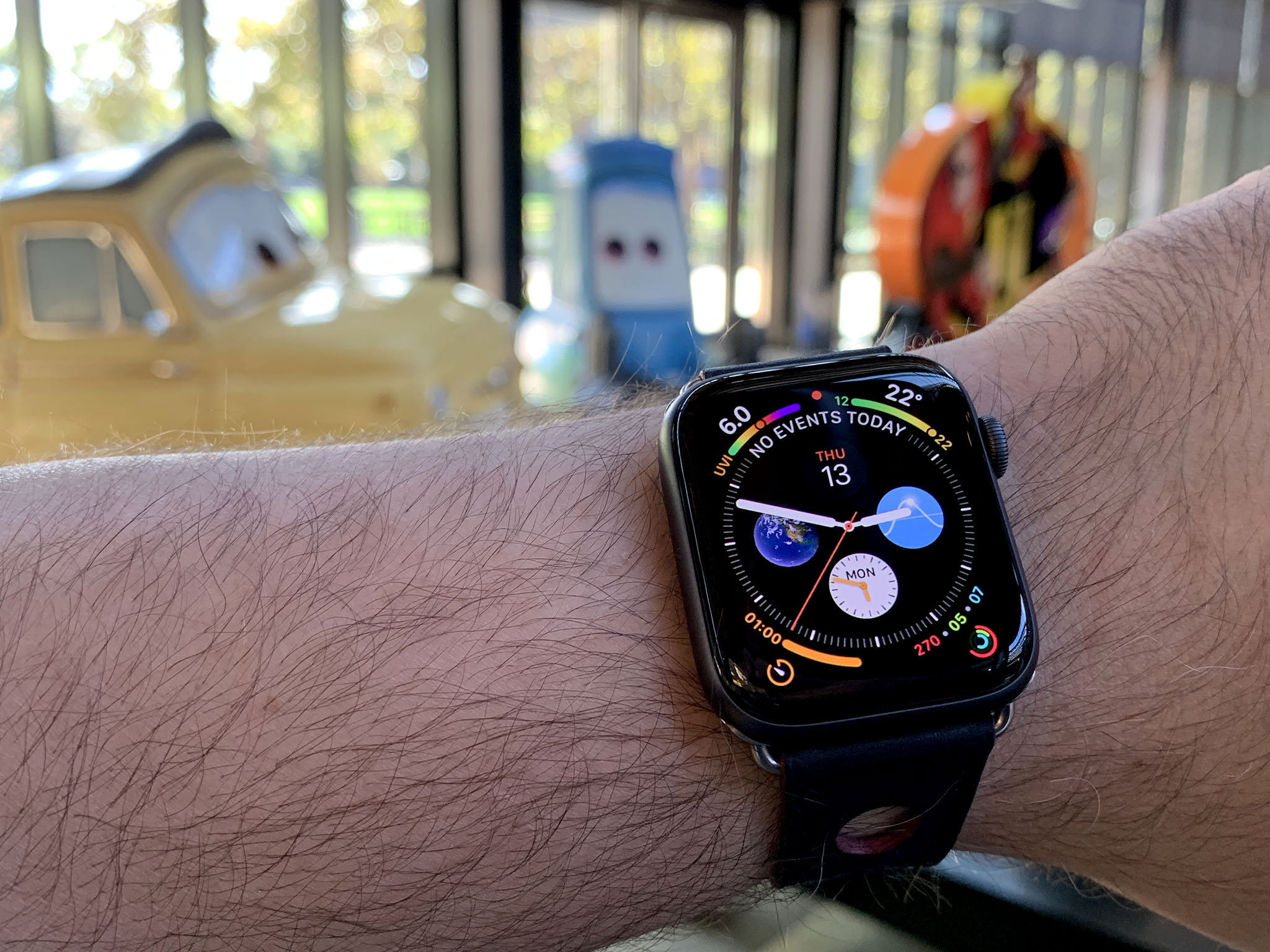
When I'm not working I switch to something simpler. Hermès if I'm going out, which is better than ever, first with the two-tone faces and, as of last week's update, new gradient faces. And, as an aside, it's great to see Apple updating those and the Nike faces more than just yearly. Also a super sparse version of simple, or Mikey or Minnie for fun.
I do wish there was a way to have the watch faces switch automatically, based on time like start or end of the workday or week, or location, like arriving at the gym.
I'm still loving the bigger display. I switched back to a series 3 for a few days just to see if I'd miss it and while the old bezels are still fine, they're also still bezels, and once you get used to it being opened up, it's tough to go back. Especially because of those new Infograph faces.
Bad news, the older faces still haven't been optimized for the bigger display. I still find them much better looking on the old watches. Good news, the older complications for messages and mail now work on the new Infograph faces, so it's kind of the best of both worlds.
I know a lot of people still want custom faces, but I'd seriously be happy with Photo for everything else if I could just get two things: An analog option and a bunch more complications. Then I'd be able to make almost any custom face I want. If you still want all the custom faces, though, let me know in the comments.
I've also been using Infograph modular for travel. Having local and destination time — or local and home once I've arrived — even a timer showing how much longer I'll be in the air.
Apple Watch is also still super convenient when I'm traveling, dragging bags, don't want to fumble for my iPhone, and can just super easily tap for everything from paying for coffee to boarding the plane. And still often faster than people next to me, who got there before me, still struggling with change or paper passes in their pockets.
I haven't mentioned the Siri watch face yet. It's gotten much better but its data still doesn't beat the utility of complications for me.
Apple Watch Series 4 Communications
I've been using an Apple Watch with cellular since they first came out roughly 18 months ago and for a long time I didn't really benefit from it since I always took my iPhone with me as well. Even when I was just out for walks, I'd play Pokemon Go or something and that meant the phone had to come with me.
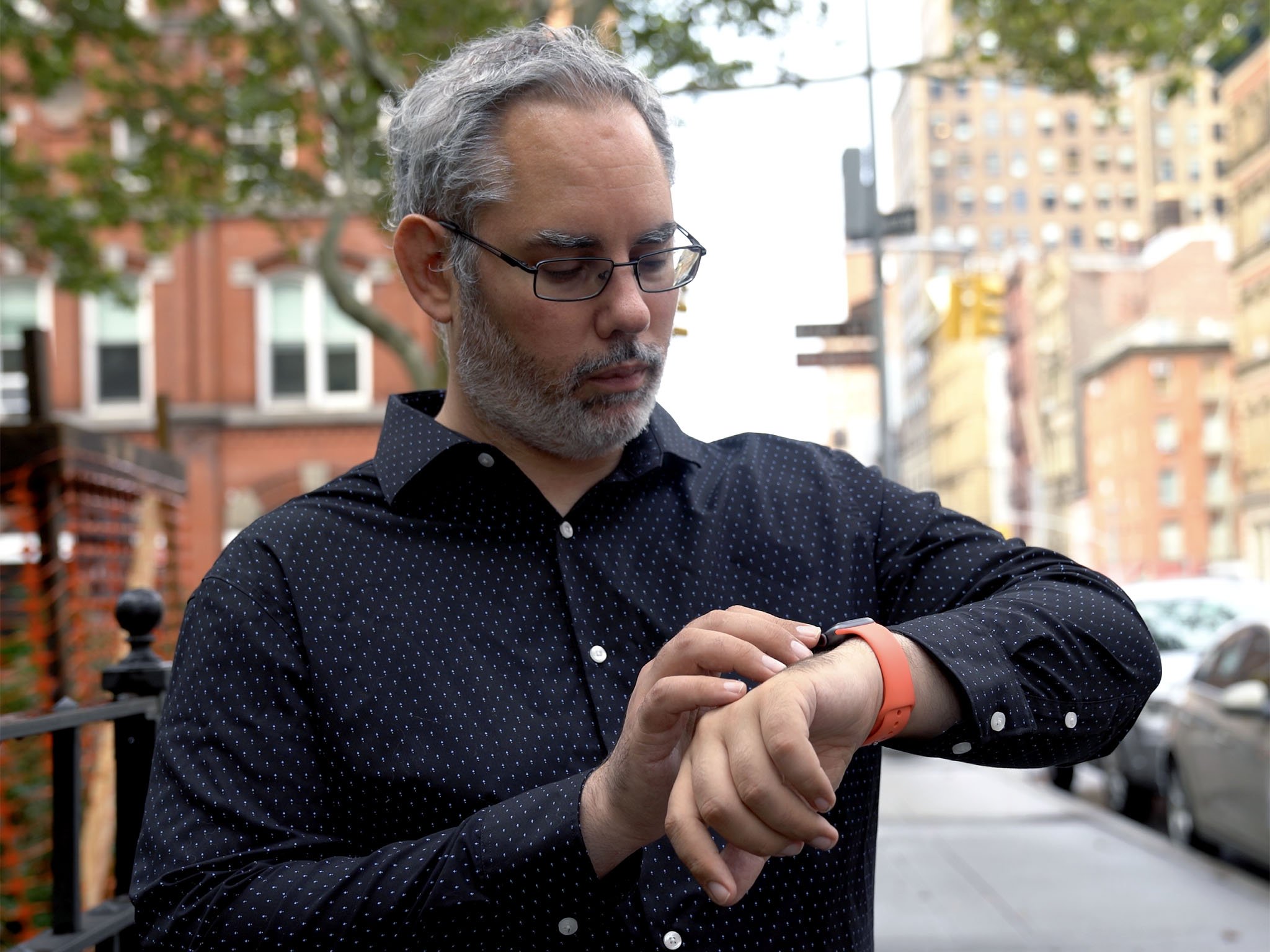
This winter was especially bad in terms of ice and being able to go outside so I ended up walking more inside so, no iPhone. And, as things melted and I started going out again, I also started leaving my iPhone at home, so I wouldn't be staring at it so much and I could keep my head up and not down.
And it works great, especially with the new, second-generation AirPods. I can listen to podcasts and audiobooks, which I do far more than music, but yes, music too, and Siri takes care of all the controls. And if important messages or calls do come in, I can triage them or answer them as I have to, without missing a step much less a connection.
It's so good that when I see other companies try to advertise worse phones designed to make you want to spend less time on them, I kinda have to laugh. If you don't want to get lost on Twitter or Insta, don't get a second phone. Just throw your iPhone in your bag or leave it in your pocket and keep your social hygiene clean with Apple Watch.
One thing I haven't been using as much, though, is the new Walkie Talkie feature. I just don't have much reason to. But, because I never want to mistake my experience for everyone else's, I asked out loud and a bunch of you told me you do indeed use if for everything from quickly sending messages to family to coordinating while out shopping.
I'm not sure if push-to-talk voice should someone integrate with messaging, but it feels like there's some similarity of use case and maybe some coalescing that could go on there?
Either way, I'm continually surprised by how much better the speaker and mic are. Especially the mic. More than a few times people I've been speaking to haven't realized I've been on my Watch instead of my phone. It doesn't noise cancel anywhere nearly as well, of course, so anything like wind will be a dead give away. Inside or on a calm day, it's been crystal.
I still struggle at times with the no-need-to-say-hey-to-Siri function. I bring my watch up, rotate my wrist, and start talking, but too often it takes more than one try. Let me know how it's working for you in the comments.
When Siri does hit, though, it also hits fast now. In general, like I said in my 2-month review, the 64-bit Apple S4 system-in-package remains so good performance is no longer something I even notice, much less worry about.
Same with battery life. 6 months later and I can still get through a day and half or two days, depending on how many workouts I track. It's come a long way since Series 0, especially when you factor in the bigger screen and increased connectivity.
Apple Watch Series 4 Fitness & Workouts
All the fitness features remain steller on Apple Watch, and the new ones are still among my favorites. Specifically, automatically starting and stopping workouts now, because I still forget sometimes. Maybe even more now because I know the watch has my back.
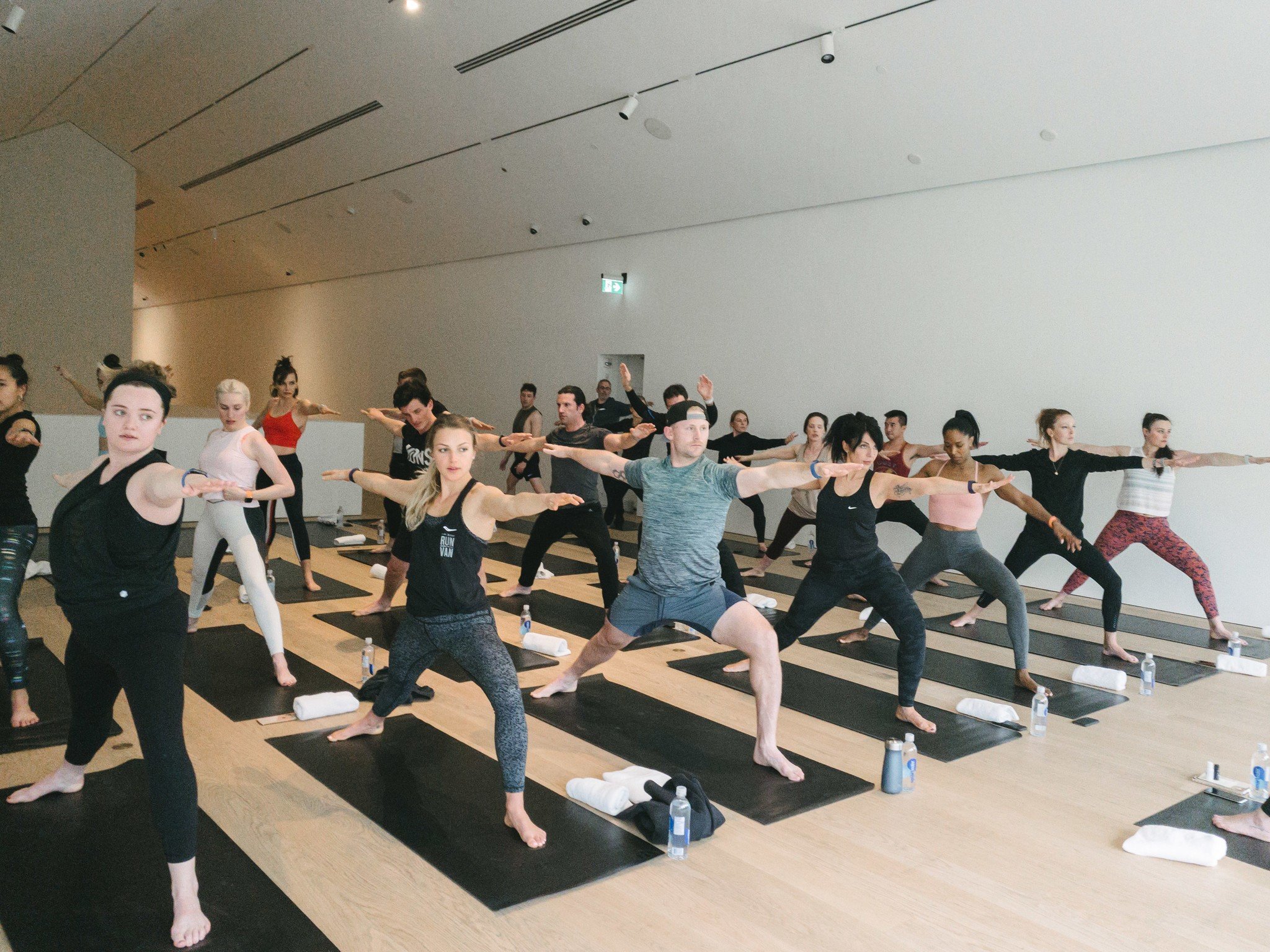
I had the chance recently to speak to a bunch of runners, including marathoners and ultra-marathoners, and they all remarked about how consistent and accurate the readings are, even staying locked onto GPS where bigger, more dedicated devices would fail.
One of them mentioned she wished she could upload intervals in advance, which is way beyond my comprehension but sounded cool when she explained it.
I also managed to spend a couple hours chatting with adventure runner Ray Zahab, who does things like run 50km a day for 100 days across the Sahara, and he's doing everything on Apple Watch now, including downloading 3D maps with his resupply stops so, you know, he doesn't die in the middle of the arctic or some desert somewhere.

Just this last week I had the chance to try out the Ski workouts on a much higher mountain than I'm used to, Whistler BC. It was in the middle of a ski and snowboard festival, and it was amazing to see how many skiers, including gold medalists, were using Apple Watch. Also, shout out to the guy at the rendezvous on top of the mountain giving an impromptu lesson on how to train with the swimming workout. Apologies for eavesdropping, but your enthusiasm was infectious.
I also tried out the Yoga workout, which I'd never tried before. I've done Taiji, Xingyi, and Bagua, never Yoga. Don't judge me. It worked really well.
So did the skiing. So well, I'm really hoping Apple adds more Canadian-friendly workouts in the future, I'll joke about snow shoveling but even outdoor walking in the snow, never mind the skating variants, would be terrific. But I realize everyone in every climate and region probably has their own wishlist, so let me know what you still want in the comments.

The thing I like about it most, though, is the approach. Apple just tests the stuffing out of all this stuff in all these labs on real people, doing real movement, in the real world. And, who'd have guessed, it all results in really useful functionality that keeps growing in diversity and usefulness over time.
Apple Watch Series 4 Health & Well-Being
I said in a previous video that the Apple Watch was more important than the iPhone. That while PCs and phones have and will continue to save lives, nothing has ever done it the way the Apple Watch does it before.
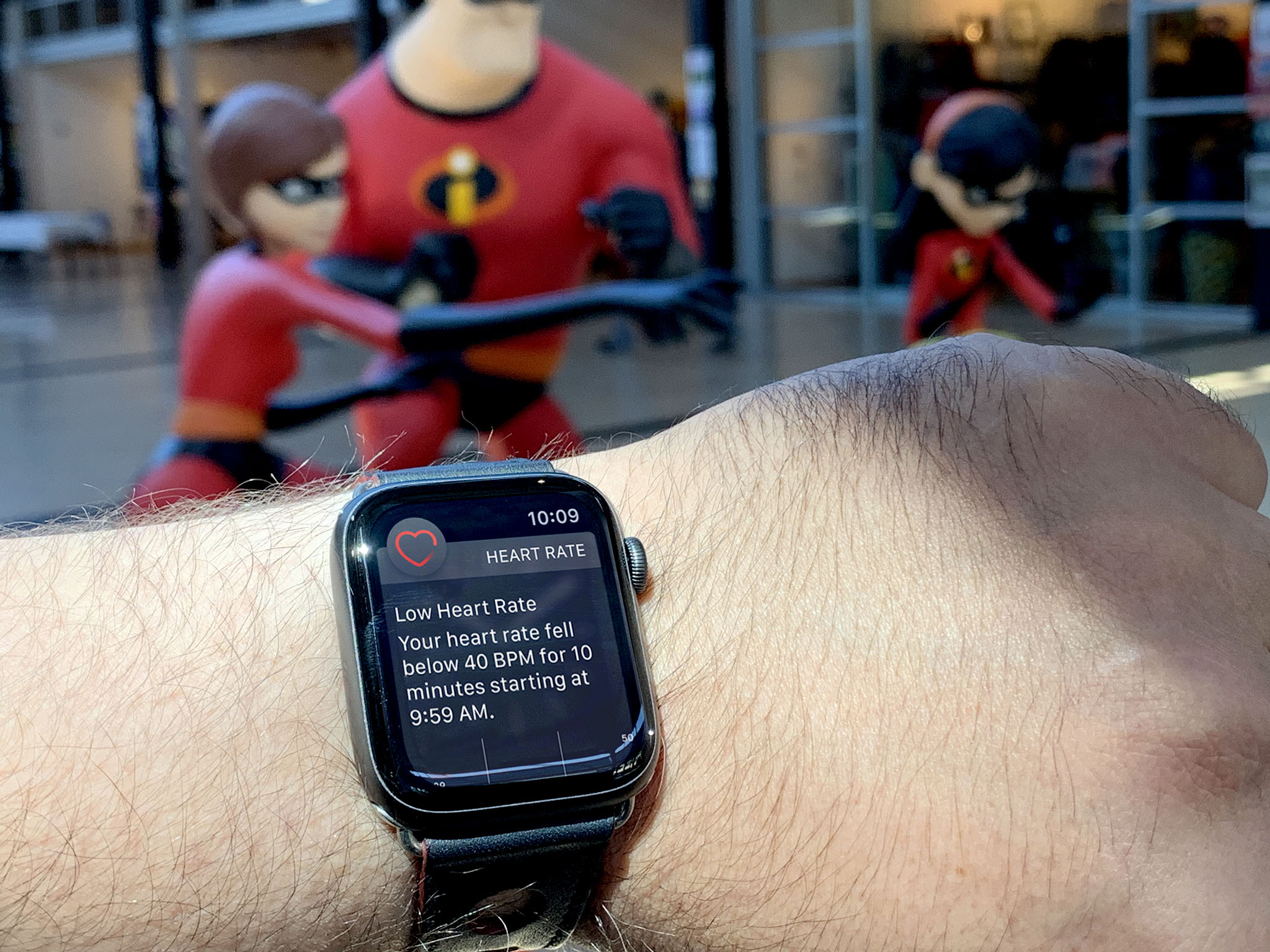
I'll start with the more dramatic stuff. It can alert you to irregular heart rhythms and, with the ECG app that's now not only in the U.S. but in Hong Kong and a whole swatch of the EU, afib as well.
It can also dial 911 for you if you're in trouble and can't reach your phone or do it yourself. That includes the new fall detection feature which I've had fun testing out but which a good friend of mine ended up triggering for real.
She fell down her basement stairs and hurt herself badly enough that she needed help. A family member ended up hearing her, but the fall detection went off on her watch and offered to call 911, and she talked about it for days, because it was just luck her family member had been home at the time.
And that's a feature that takes a piece of technology from being valuable to being invaluable in the blink of an eye — or miss of a step.
Also, while there's been some fear mongering around the heart rate and ECG app, none of that seems to have been warranted. Across the U.S. and Europe, while you can find some doctors willing to be concerned about it if you try, all evidence points to the features being accurate and genuinely helpful to patients and doctors alike.
I know it absolutely sucks if ECG isn't in your country yet — because, while I've used it on a U.S. watch, it isn't in mine, but Apple seems intent on pushing it out in as many places as possible as quickly as possible, which means working with as many local medical and regulatory people as possible. So, we'll see how far they get by the end of year one.
When I was talking to Ray, though, he also pointed out something I hadn't considered: He used the data himself as well, personally. He said he could never get enough health data and used heart rate, resting heart rate, all of it, to figure out everything from caloric intake to how to optimize sleep for the massive amount of recovery he needs during training and after excursions.
He literally couldn't stop talking about how much of a revaluation it'd had been to him as an athlete.
And I think we're only going to see that kind effect more and more. And that's just the hardware and software side. Given how important services, in general, have become to Apple, and the potential for healthcare services in specific — something I've covered in a previous column — it takes zero effort or insight to say this is just the beginning.
Apple Watch Series 4 Ambient computing
Over the last 6 months I've come to realize something about the Apple Watch, thanks in large part to the advances in Series 3 and series 4: As much as home assistants can do more and more at home, and phones are things we often have with us, the Apple Watch is something we can almost always have with us. Literally on us. Especially when combined with the new AirPods, it's the closest thing we have to real, ultra-personal ambient computing.
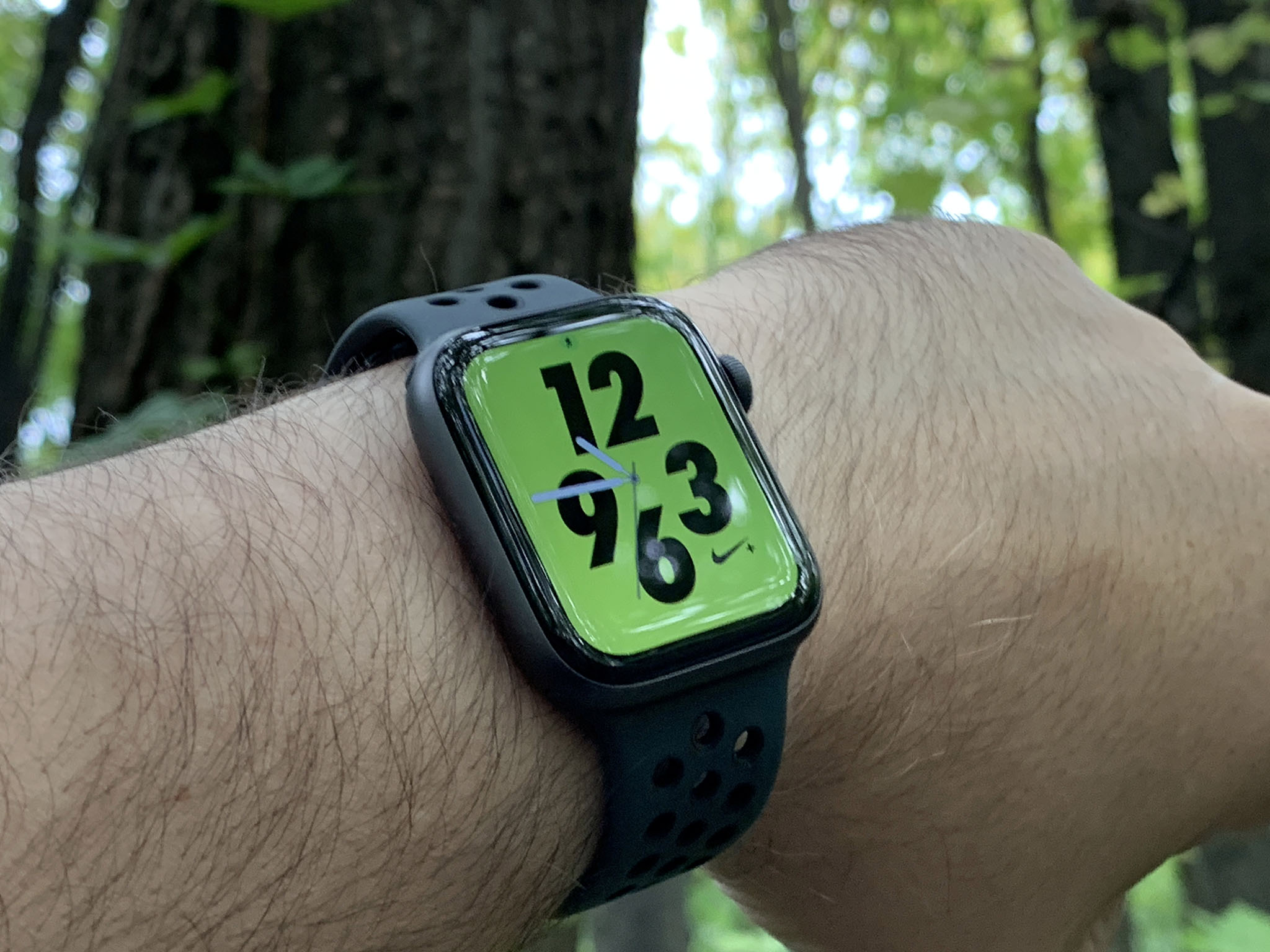
It's not in our face. It's not in our way. It's not captivating us or distracting us. It's just there, ready to provide information or help us out whenever we want it to, with the display or with the mic and speaker.
It's not quite sci-fi yet, but it's getting there.
The biggest downside is that the watch market and the truly wireless headphone market, like the tablet market, is almost entirely Apple's. Which means the personal wearables market, from silicon to hardware to software, has pretty much no real competition.
And yeah, it's expensive in terms of time and resources to compete for this specific a market, same as tablets, especially when phones are still so big, but as a consumer, I always prefer several strong contenders in the market.
But, next time some pundit or another complains Apple isn't innovating, politely point them to wearables, which is likely going to be far more important that most other markets over the next decade, and kindly encourage them to subscribe to my YouTube channel.
I know statements like that will piss off some of you, and this review not being manufactured to be more negative will piss off some more, and I could get a lot more views and subscribers a lot faster if I just yelled and complained, frankly, mindlessly, a lot more.
I'm an optimist. I love technology. I want the future today. Which is why I'm so optimistic about the Apple Watch. Perhaps more than any other product I use, it feels like it's given me the future today.
Subjectively, I'm liking it more and more not just every generation but every month of every generation I'm using it. Objectively, it's delivering so much already, and more every update.
So, six months in, is the Apple Watch Series 4 still worth getting? Coming off it's first major redesign, we're unlikely to get another for a while. It's also likely to keep getting updates, and new band options, for a while. So, my advice as always is if you can wait, wait as long as you can, because there'll always be something new around the corner. But if you need it or would benefit from getting it now, absolutely get Apple Watch Series 4 now and have zero regrets. Because there will always be something new around the corner so don't deny yourself anything you could benefit from now.
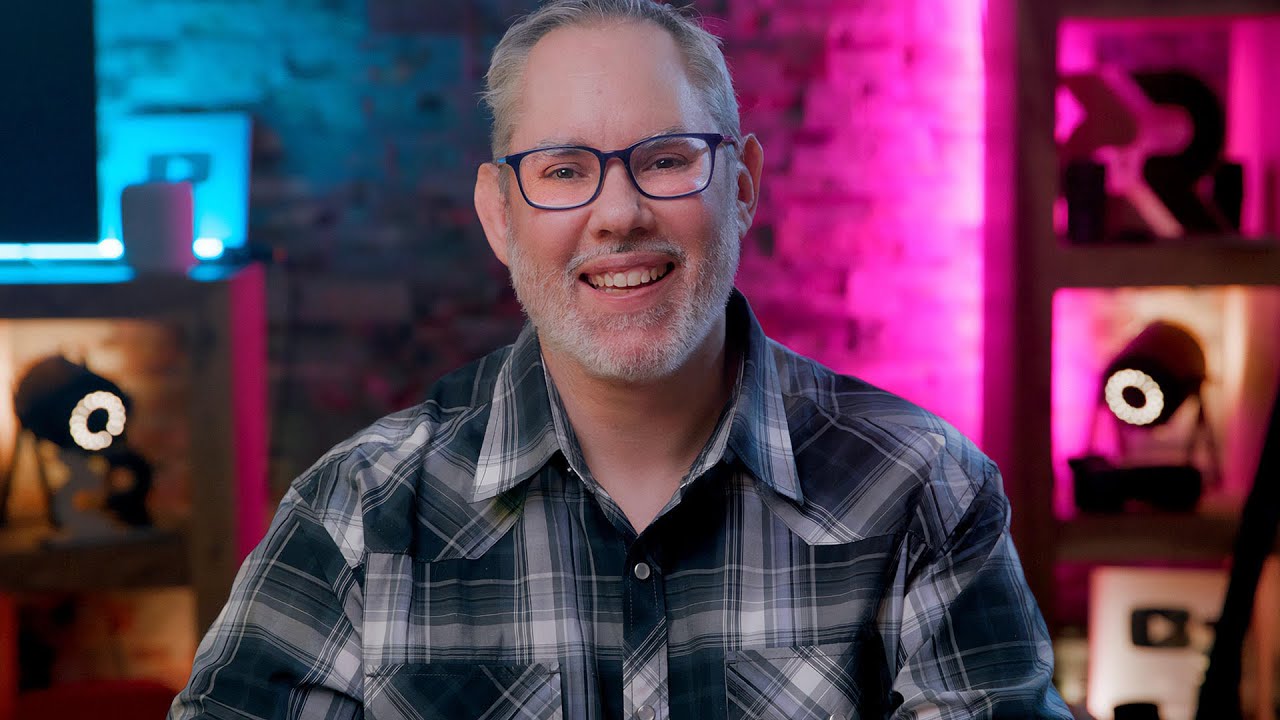
Rene Ritchie is one of the most respected Apple analysts in the business, reaching a combined audience of over 40 million readers a month. His YouTube channel, Vector, has over 90 thousand subscribers and 14 million views and his podcasts, including Debug, have been downloaded over 20 million times. He also regularly co-hosts MacBreak Weekly for the TWiT network and co-hosted CES Live! and Talk Mobile. Based in Montreal, Rene is a former director of product marketing, web developer, and graphic designer. He's authored several books and appeared on numerous television and radio segments to discuss Apple and the technology industry. When not working, he likes to cook, grapple, and spend time with his friends and family.
